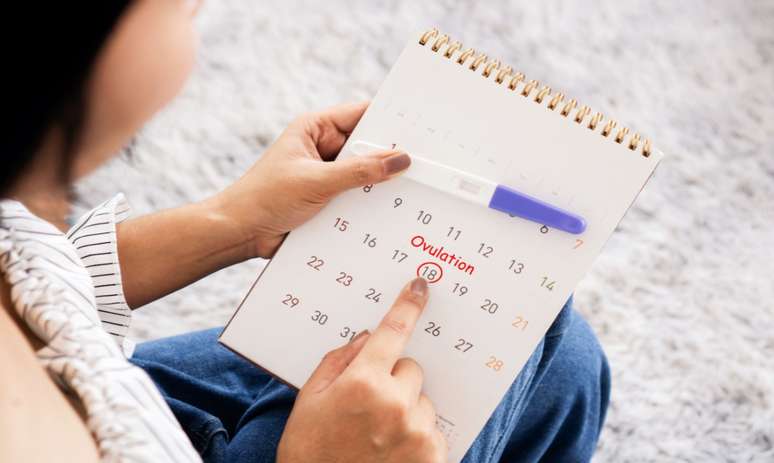The doctor recommends abandoning apps and tablets to pay attention to the signals your body gives. Find out how to identify ovulation
Ovulation is the release of the egg by the ovary into one of the uterine tubes, a fundamental phenomenon for fertilization to occur. In other words, it is at this stage that a woman has the greatest chance of becoming pregnant. Therefore, many are curious – and even doubtful – about identifying when they are ovulating.
4 signs you’re ovulating
The first natural step to knowing if you are ovulating is knowing the regularity of your menstrual cycle. But, furthermore, the midwife Dr. Dúnia Poli do Valle highlights 4 signs that the body generally gives during ovulation:
1. Change in cervical mucus: During the fertile period, the mucus can be stickier and thinner, taking on the famous “egg white” appearance. It’s also quite watery, which can cause “water” stains on panties;
2. Increased body temperature: This change occurs at the end of the fertile period and continues until the onset of menstruation. This is subtle, but noticeable to those who measure their body temperature every day, such as women who practice fertility perception methods;
3. Increased libido: an increase in sexual appetite is also common during the fertile period and, therefore, can be a sign of ovulation;
4. Cramps or pain: Some women may experience excruciating pain during ovulation or even cramps in their lower abdomen at this stage. This happens because when the egg is released, a small blood vessel near the ovary can rupture, and this blood can irritate the abdominal cavity, causing pain.
“It is important to remember that the fertile period lasts about 6 days, but that ovulation lasts only 24 hours. This is because these changes in the cervical mucus allow sperm to survive longer in the female body (up to 3 days on average), and throughout the fertile period we have the possibility of becoming pregnant”, underlines the specialist.
How to calculate the ovulation window in your cycle
The obstetrician points out that it is a myth to think that ovulation occurs exactly in the middle of the menstrual cycle. This is because women are different, cycles vary in length and “because we are not robots”, explains Dúnia.
“Our cycle can change based on changes in sleep, diet, stress, emotional factors and some metabolic changes. It is not reliable to rely on the popular chart or current apps to take notes on the menstrual cycle,” she warns.
According to her, if a woman truly wants to perceive and recognize the fertile period, she should use a more reliable method of observing her body, such as fertility perception methods.
“These methods teach you to observe cervical mucus, temperature, characteristics of the cervix and secondary symptoms. There are women who are instructors of these methods and accompany users through learning,” he points out.
Do women who use contraception still ovulate?
Dúnia further explains that women who use hormonal contraception generally do not ovulate and, therefore, do not experience the above-mentioned symptoms or symptoms associated with hormonal fluctuations (as occurs in “PMS”).
“Users of hormonal IUDs may or may not ovulate, depending on each woman’s response to the method. Additionally, users of copper or copper and silver IUDs continue to have their menstrual cycles unchanged thanks to the method,” she says.
Source: Terra
Ben Stock is a lifestyle journalist and author at Gossipify. He writes about topics such as health, wellness, travel, food and home decor. He provides practical advice and inspiration to improve well-being, keeps readers up to date with latest lifestyle news and trends, known for his engaging writing style, in-depth analysis and unique perspectives.








